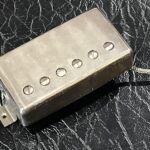Introduction to b1395 device voltage reference output
When it comes to precision in electronics, the need for a stable and accurate voltage reference can’t be underestimated. Enter the b1395 device voltage reference output: a powerhouse designed to deliver reliable voltage output that engineers trust. Whether you’re working on advanced circuit designs or simple DIY projects, understanding what makes the b1395 stand out can transform your approach to power management.
Imagine having a component that not only enhances your project’s stability but also simplifies complex calculations. The b1395 device is more than just another piece of equipment; it’s an essential tool in achieving optimal performance. Let’s dive into the world of this remarkable voltage reference output and explore its significance in modern applications.
Understanding Voltage References and Their Importance
Voltage references are crucial components in electronic circuits. They provide a stable reference voltage, essential for accurate signal processing and measurement.
These devices help maintain precision in various applications. From analog-to-digital converters to operational amplifiers, their role is irreplaceable. A reliable voltage reference ensures that circuits operate within desired parameters.
The importance of a stable voltage cannot be overstated. Fluctuations can lead to inaccuracies, affecting the overall performance of electronic systems. Precision instruments depend on these references for consistent readings.
Moreover, they enhance noise immunity across different environments. This stability allows engineers to design more efficient and dependable systems. In an era where accuracy is paramount, understanding voltage references becomes vital for any electronics enthusiast or professional.
What is the b1395 device voltage reference output?
The b1395 device voltage reference output is a specialized component designed to deliver precise voltage levels. It plays a crucial role in electronic circuits where accuracy and stability are paramount.
This device operates by providing a stable reference voltage that other components can rely on. It ensures consistent performance, even when the power supply fluctuates or loads change.
Typically, the b1395 offers low noise and minimal drift over time. These characteristics are essential for applications requiring high precision, such as analog-to-digital converters or sensitive measurement equipment.
Additionally, its compact form factor makes it suitable for various designs without consuming excessive board space. As a result, engineers often turn to this reliable solution to enhance their circuit designs with dependable voltage references.
Advantages and Applications of Using the b1395 Device
The b1395 device voltage reference output offers several distinct advantages. Its precision ensures that circuits operate reliably, making it ideal for applications where accuracy is paramount. By maintaining a stable output voltage, the b1395 minimizes drift and enhances overall system performance.
One notable application is in analog-to-digital converters (ADCs), where consistent voltage levels are essential for accurate readings. This device also finds its place in power management systems, providing a dependable reference point that boosts efficiency.
Moreover, the compact size of the b1395 allows easy integration into various designs without requiring excessive board space. It’s suitable for both consumer electronics and industrial equipment, showcasing versatility across different sectors. The low noise characteristics further enhance its appeal in sensitive audio or instrumentation applications. Each feature contributes to making the b1395 an excellent choice for engineers seeking reliability and performance in their projects.
How to Use the b1395 Device for Accurate Voltage Reference Output
To use the b1395 device for precise voltage reference output, start by familiarizing yourself with its pin configuration. Understanding each pin’s function is crucial for effective connection.
Next, ensure that you provide a stable power supply to the device. Fluctuating input voltages can lead to inaccurate reference outputs, so maintain a consistent source.
Connect your load to the output pin carefully. This ensures that your measurements or operations benefit from an accurate reference voltage without unnecessary interference.
When setting up your application circuit, consider adding decoupling capacitors close to the power pins. These components help filter out noise and enhance performance.
Always test the output with a high-precision multimeter after installation. Monitoring helps confirm accuracy and highlights any potential issues early on in operation.
Comparison with Other Voltage Reference Devices
When comparing the b1395 device voltage reference output to other devices, several factors come into play. Stability is often a key consideration. The b1395 offers exceptional stability over temperature and time, which many competitors struggle to match.
Noise performance is another area where the b1395 shines. Its low noise output ensures that sensitive applications maintain accuracy without interference from fluctuations.
Additionally, power consumption can be a determining factor for designers. The b1395 strikes an impressive balance between efficiency and performance, making it suitable for battery-operated devices.
Consider ease of integration with existing systems. Many users find that the straightforward design of the b1395 simplifies implementation compared to more complex alternatives on the market today. This user-friendliness can save valuable engineering time and resources in product development cycles.
Tips for Maintaining and Troubleshooting the b1395 Device
Maintaining the b1395 device voltage reference output requires regular checks. Start by ensuring proper connections to avoid any disruptions in performance.
Keep the operating environment clean and dry. Dust accumulation can lead to inaccuracies in voltage readings over time.
Monitor the power supply closely. Fluctuations or noise can affect the stability of your output, leading to unreliable results.
If you experience issues, double-check component placements and solder joints for faults. A quick visual inspection often reveals hidden problems.
Consider using an oscilloscope for real-time analysis of the output signal. This tool helps identify irregularities that may not be immediately visible.
Don’t overlook firmware updates if applicable; they might contain essential improvements or fixes that enhance functionality and reliability.
Document any changes made during troubleshooting to build a comprehensive history of device performance, which will assist future maintenance efforts.
Conclusion: Why the b1395 Device is a Reliable Choice for Your Voltage Reference Needs
The b1395 device stands out for its precision and stability in voltage reference output. Users appreciate its ability to maintain consistent performance across various conditions.
It’s designed with reliability in mind, making it suitable for critical applications where accuracy is paramount. Engineers favor the b1395 because it minimizes errors, enhancing overall system performance.
Moreover, this device offers versatility that meets diverse project requirements. Whether you’re working on consumer electronics or industrial systems, the b1395 adapts seamlessly.
Maintenance is straightforward too, ensuring you can keep your projects running smoothly without unnecessary downtime. With effective troubleshooting resources available, users have support at their fingertips when issues arise.
Countless professionals trust the b1395 for dependable results time after time. Its reputation as a top-tier voltage reference continues to grow among those who prioritize quality and precision in their designs.
FAQs
Q: What is the b1395 device voltage reference output?
A: The b1395 device voltage reference output provides a stable and precise voltage that can be used in various applications, including analog-to-digital converters and signal processing.
Q: How accurate is the b1395 voltage reference?
A: The b1395 offers high precision with minimal drift over temperature variations. Its accuracy makes it suitable for even the most demanding electronic designs.
Q: Can I use the b1395 in battery-operated devices?
A: Yes, the b1395 is designed for low power consumption, making it an ideal choice for battery-operated systems requiring reliable voltage references without draining resources quickly.
Q: What are common applications of the b1395?
A: Common applications include instrumentation, telecommunications, and consumer electronics where consistent performance is crucial.
Q: How do I troubleshoot issues with my b1395 device?
A: For troubleshooting, check your connections first. Ensure that power supply levels meet specifications and verify load conditions to prevent unexpected behavior from the device.
Q: Does using a heat sink improve performance?
A: In general usage scenarios at standard temperatures, a heat sink may not be necessary. However, if you’re operating near maximum ratings or in higher ambient temperatures, consider additional thermal management strategies to enhance reliability.
Q: Is there any alternative to the b1395 device?
A: There are several alternatives available on the market; however, they may lack some specific features or advantages offered by the b1395 model. It’s essential to compare specifications based on your project needs before making a selection.

















